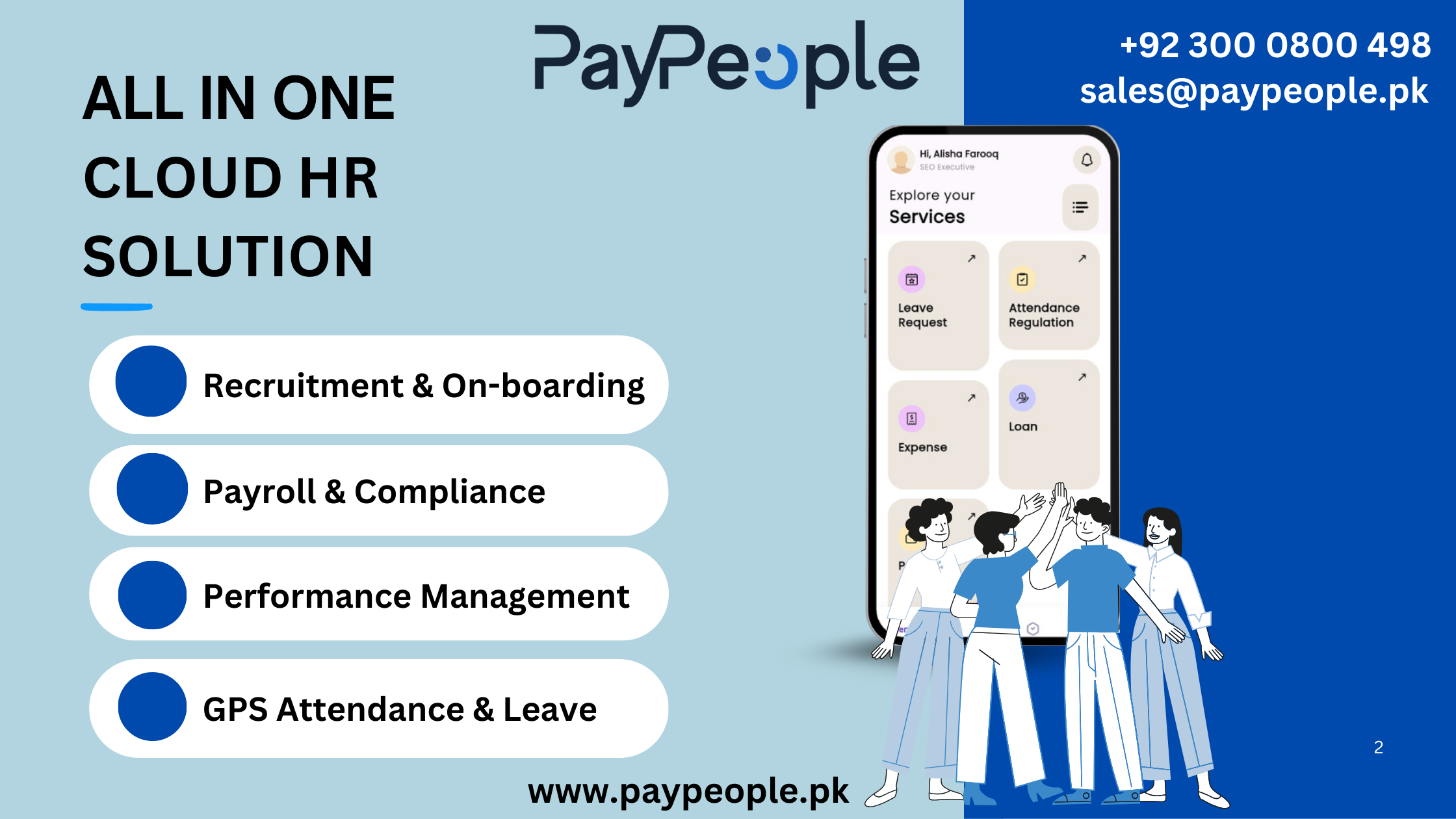Human Resources (HR) has always been a cornerstone of organizational success. As businesses grow and evolve, the complexity of managing employee-related functions increases significantly. Manual processes, spreadsheets, and disconnected systems are no longer adequate to handle the diverse responsibilities of HR departments. In this landscape, Human Resource (HR) Software emerges as a comprehensive solution to modern HR challenges. By automating, integrating, and optimizing HR functions, HR Software plays a crucial role in enhancing organizational efficiency, employee experience, and strategic decision-making.
Understanding HR Software
HR Software refers to a digital system designed to streamline and automate various HR processes within an organization. These processes typically include recruitment, onboarding, payroll, attendance tracking, performance management, learning and development, and employee data management. By centralizing these functions, HR Software reduces administrative burden, minimizes errors, ensures compliance, and enhances data visibility.
Modern HR Software is often cloud-based, offering anytime-anywhere access to HR data and tools. It also integrates seamlessly with other enterprise systems such as accounting software, communication tools, and project management platforms, creating a cohesive operational ecosystem.
Core Functions of PayPeople HR Software
The scope of HR Software is expansive and can vary based on organizational needs. However, the following are the core modules commonly found in comprehensive HR systems:
1. Recruitment and Applicant Tracking:
HR Software facilitates efficient hiring processes through Applicant Tracking Systems (ATS). It allows HR teams to post jobs, screen resumes using AI, conduct interviews, and track candidate progress through a centralized dashboard. Automated resume parsing and job-matching algorithms reduce time-to-hire and improve the quality of talent acquisition.
2. Onboarding and Offboarding:
A seamless onboarding experience helps new hires integrate into the company culture quickly. HR Software automates tasks such as document collection, training assignments, introductions, and compliance checklists. Similarly, during offboarding, it manages exit interviews, asset return tracking, and final settlements efficiently.
3. Payroll and Compensation Management:
Managing salaries, taxes, benefits, and statutory compliance can be complex. HR Software automates payroll processing, generates payslips, calculates deductions, and ensures adherence to local laws. This not only reduces errors but also saves significant time and resources.
4. Attendance and Leave Management:
HR Software includes biometric integration, shift scheduling, and leave tracking features. Employees can apply for leaves, check balances, and view attendance reports via self-service portals. This transparency fosters trust and accountability.
5. Performance Management:
HR Software supports continuous performance evaluation through goal-setting, Key Performance Indicators (KPIs), 360-degree feedback, and appraisal workflows. It empowers managers and employees to collaborate on career development and skill enhancement.
6. Employee Self-Service Portals:
One of the transformative features of HR Software is the self-service functionality. Employees can update their profiles, view salary slips, submit requests, and access HR documents without involving HR personnel directly. This reduces administrative workload and enhances employee engagement.
7. Learning and Development (L&D):
Training and upskilling are integral to employee growth. HR Software often includes Learning Management Systems (LMS) that help plan, deliver, and track employee training programs. It supports e-learning, certification tracking, and personalized learning paths.
8. HR Analytics and Reporting:
Advanced HR Software provides real-time insights through dashboards and reports. It helps HR leaders analyze turnover rates, hiring efficiency, training effectiveness, and other critical metrics. These analytics support data-driven decision-making and strategic planning.
Benefits of HR Software for Modern Businesses
1. Enhanced Operational Efficiency:
Automation eliminates repetitive tasks, enabling HR professionals to focus on strategic initiatives rather than administrative duties.
2. Improved Compliance:
By incorporating local and international labor laws, HR Software helps businesses stay compliant with legal requirements, reducing the risk of penalties.
3. Data Accuracy and Centralization:
Maintaining a single source of truth for all employee information ensures data accuracy and reduces redundancy across departments.
4. Better Employee Experience:
From onboarding to performance reviews, a digital HR environment provides a smoother and more consistent experience for employees.
5. Cost Savings:
By reducing manual errors, improving hiring processes, and optimizing resource allocation, HR Software contributes to cost efficiency.
6. Scalability:
As businesses grow, HR Software scales easily to accommodate more users, roles, and processes without the need for major infrastructure changes.
7. Strategic Decision-Making:
With access to insightful analytics, organizations can make informed decisions on workforce planning, talent development, and resource management.
Cloud-Based HR Software: A Paradigm Shift
The shift from on-premise systems to cloud-based HR Software marks a significant transformation in the HR domain. PayPeople Cloud-based solutions offer real-time access to data, regular updates, and enhanced security. Moreover, they require minimal IT maintenance, making them ideal for small to medium-sized enterprises as well as large corporations.
Software-as-a-Service (SaaS) models allow businesses to pay for what they use, providing flexibility and cost-effectiveness. Cloud HR solutions also support remote work dynamics, which have become increasingly important in the post-pandemic era.
Integration with Emerging Technologies
Modern HR Software is no longer just a tool for process management. It incorporates advanced technologies to deliver superior value:
Artificial Intelligence (AI): AI improves recruitment through intelligent candidate screening, automated interview scheduling, and predictive analytics for employee attrition and performance.
Machine Learning (ML): ML algorithms identify trends and anomalies in HR data, aiding proactive decision-making.
Robotic Process Automation (RPA): RPA automates repetitive tasks such as data entry, document generation, and payroll processing.
Blockchain: In certain systems, blockchain enhances data security and integrity, especially for sensitive employee records and background checks.
HR Software for SMEs and Enterprises
HR Software is not limited to large corporations. Today’s solutions cater to a wide range of business sizes and industries. Small and medium enterprises (SMEs) can benefit from simplified, affordable platforms that offer essential features like payroll, attendance, and employee databases. On the other hand, large organizations may require enterprise-grade solutions with extensive customization, multi-location support, and compliance with diverse regulatory frameworks.
Key Considerations When Choosing HR Software
Selecting the right HR Software depends on several factors:
Business Size and Complexity: Choose software that matches your workforce size and operational scale.
Features and Customization: Evaluate whether the solution offers modules tailored to your needs.
Ease of Use: A user-friendly interface ensures adoption across all employee levels.
Integration Capabilities: Ensure compatibility with existing tools such as accounting, CRM, and ERP systems.
Data Security: Confirm that the software complies with data protection laws and uses encryption and secure access protocols.
Customer Support: Reliable vendor support is essential for smooth implementation and issue resolution.
Conclusion: A Strategic Asset for Business Success
PayPeople HR Software has evolved into a strategic asset that empowers businesses to manage their most valuable resource—people—more effectively. By automating routine tasks, improving compliance, and enabling data-driven strategies, HR Software transforms human resource management from a back-office function into a pivotal driver of organizational growth. Whether a small startup or a multinational corporation, investing in a robust HR Software solution is no longer optional—it is a critical step toward operational excellence and competitive advantage in the digital age.















Leave a comment